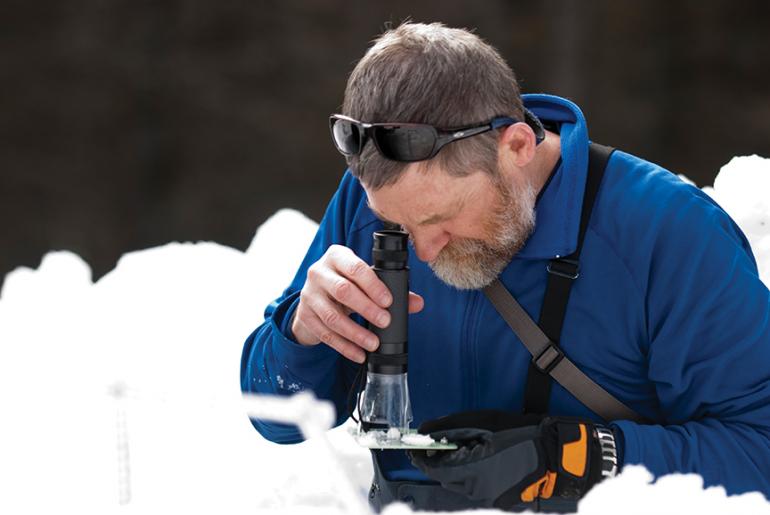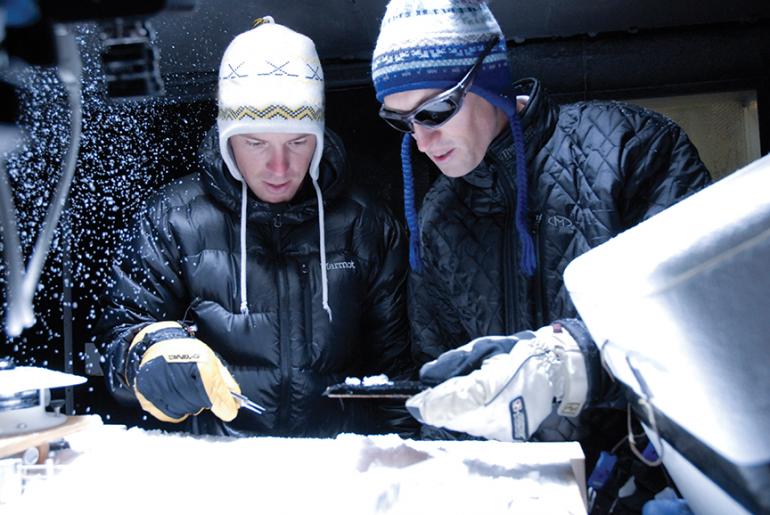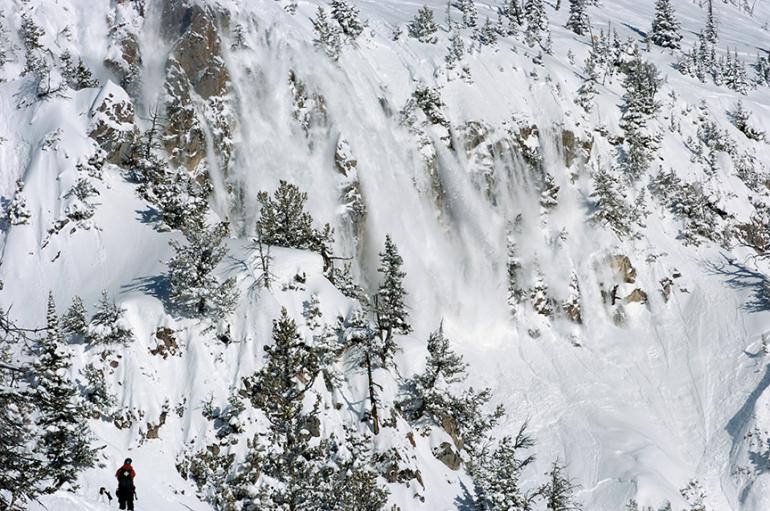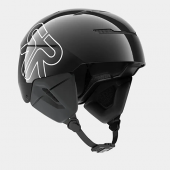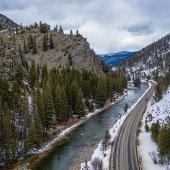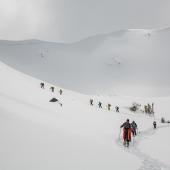Snow-Blinded with Science
Once those little white flakes start falling from the sky, dreams of powder turns and face-shots begin as you wait for the little blue light atop the Hotel Baxter to start flashing, announcing fresh snow at Bridger Bowl. Your love of snow extends even beyond the boundaries of the ski resort as you study the flakes on your mittens, test the layers of snow in your front yard, and blissfully catch the falling flakes on your tongue. But now your girlfriend’s a little concerned because she caught you doing a pray-for-snow dance in your underwear under the full moon. Anywhere else, this unconditional love for frozen water may send you to a mental institution; but here in Montana, you can ski it, you can breathe it, you can build it—and you can even major in it.
MSU’s Snow Science program in the Department of Earth Sciences holds a reputation as one of the best places in the world to study snow. Here, undergrads can earn a BS in Earth Sciences with an emphasis on snow science and graduate students can earn a Ph.D. or M.S. in Earth Sciences, focusing their research on different aspects of snow science. While other universities are studying snow simply as it pertains to weather patterns and snow hydrology, MSU undergrad and graduate students are studying snow in all regards by collaborating with the engineering program and researchers from around the world in state-of-the-art laboratories. In addition to having top-notch facilities and professors, students participate in classes and test their research in the local mountain ranges—research sites that easily evoke jealousy from other universities around the world.
It all began after World War II as two mountain men led the way for snow research. Charles Bradley and John Montagne served together in the U.S. Army’s 10th Mountain Division, seeing first-hand the need for advanced research in the areas of avalanches and high-mountain snow. Together, they launched not only the Snow Science Program at Montana State, but the entire Department of Earth Sciences. Taking advantage of the adjacent natural world, they used Bridger Bowl as their primary research site—a trend which continues today for students and researchers thanks to Bridger’s generosity and commitment to the program.
Before you quit your job and enroll at MSU to study snow, brace yourself—this well-respected program didn’t earn its bragging rights by building the biggest ski jump. Dr. Jordy Hendrikx, professor of Geography and Director of Snow and Avalanche Laboratory, warns prospective students to prepare for several years of chemistry, physics, and calculus before the word “snow” is even mentioned; but “eventually we ski and play in the snow—but in a scientific construct.” Those who can tough out the essential foundational classes are rewarded with exciting classes such as Mountain Geography, Glacial Geology, and Snow Dynamics and Accumulation, with a weekly field study typically at Bridger Bowl. Students may also have the opportunity to partner with the Gallatin National Forest Avalanche Center and help with avalanche seminars for community outreach and education.
Students enter the program from many different backgrounds, but Hendrikx believes that personal experience is a huge motivator. More than a handful of students and faculty have lost friends in avalanches, while others have been caught in some themselves. But tragedy is not the only motivator; all students are passionate about snow and understand its influence on the natural world. Graduate student Jason Welz, originally from Connecticut, worked for the Forest Service studying snowmelt and hydrology before his acceptance to the graduate program. Welz says that his favorite part of the program is being able to use his practical knowledge and apply it in a truly scientific and research-based manner. The most challenging part of school so far is collecting field data alone in snow storms—which can turn to thunderstorms at the drop of a hat, and are made much more exciting by carrying a 10-foot pole for measuring depths.
Luckily for students, experience and research isn’t limited to the frigid months of winter. Snow Science students also have the opportunity to work in a custom-built cold lab designed by professors Ed Adams and John Priscu—the only one like it in the world, which can actually produce and build surface hoar: a notoriously weak layer of snow that can cause avalanches.
If Mom and Dad need some convincing as to why a degree in “snow” is a smart move, tell them that a degree in Snow Science, especially at the graduate level, holds much promise for a successful career. Graduates from MSU have gone on to work as year-round forecast directors around the country such as forecasters for the Going To The Sun Road in Glacier National Park and the Colorado Avalanche Center. Others have found careers with GIS work, utility companies, and the USDA’s Natural Resources Conservation Service. Of course, there are the fun jobs that may only require an undergrad degree, such as ski patrollers and helicopter ski guides, but these are seasonal, dangerous, and don’t pay as much. Go for a graduate degree, advises Dr. Hendrikx, for a shot at the “best snow jobs” in the world.
Local mountain communities, and others around the world would not be the same without this program and the study of snow. Not only are diligent students and researchers keeping skiers and recreationists safer by studying the dangers of avalanches, they are also studying the effects of snowpack and water runoff, a cycle that affects all of us year-round. The program wants to further study this community impact by collecting data regarding backcountry decision-making, emotions, local cultures, snow conditions, and education. This new study from the program asks volunteer backcountry skiers of all levels from around the world to track their adventures on a uniquely designed app, answer a few questions about their decisions that day, and send in the data. Researchers hope to find answers to why a particular slope was chosen, whether they took proper precautions in the backcountry, and what influenced a skier’s decisions if they chose to ski or retreat after testing for avalanches. Get involved at montana.edu/snowscience/tracks.
Bozeman is lucky to have such a world-renowned and collaborative program working hard to keep us safe in the backcountry and keep our communities healthy. So next time you catch a snowflake on your tongue or dream about fresh backcountry snow, be sure to think of Welz, Yokely, and the other students and researchers tromping through the unpredictable elements studying snow science so you can enjoy a few powder turns.

